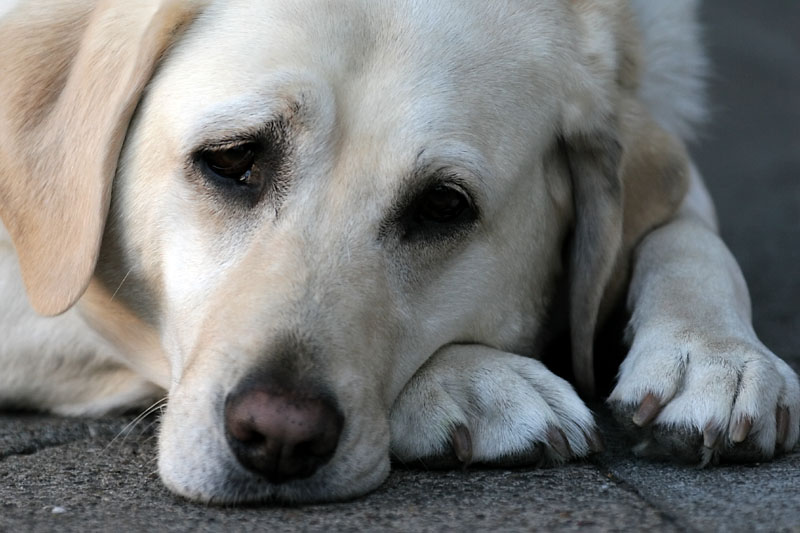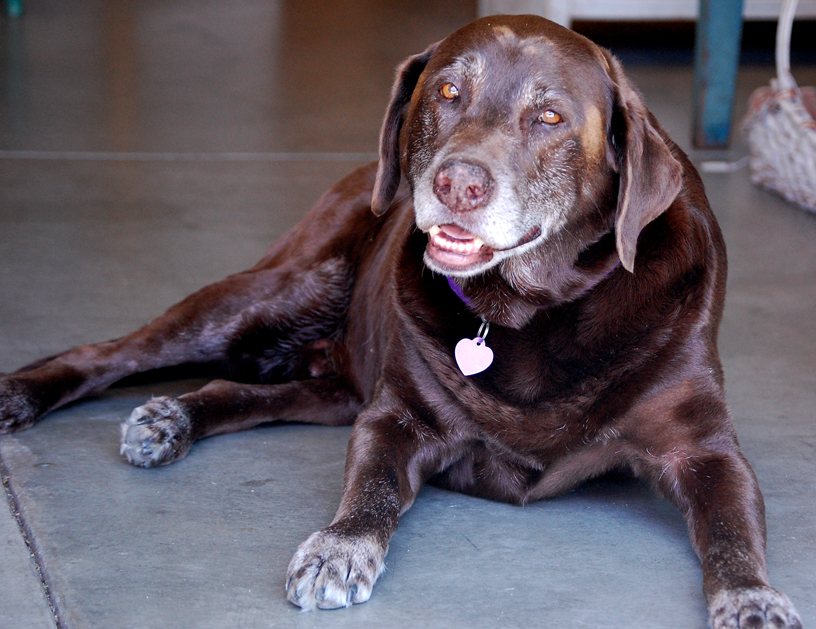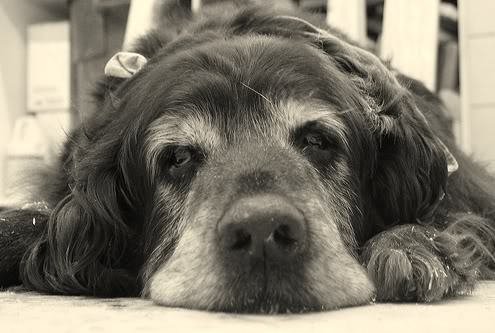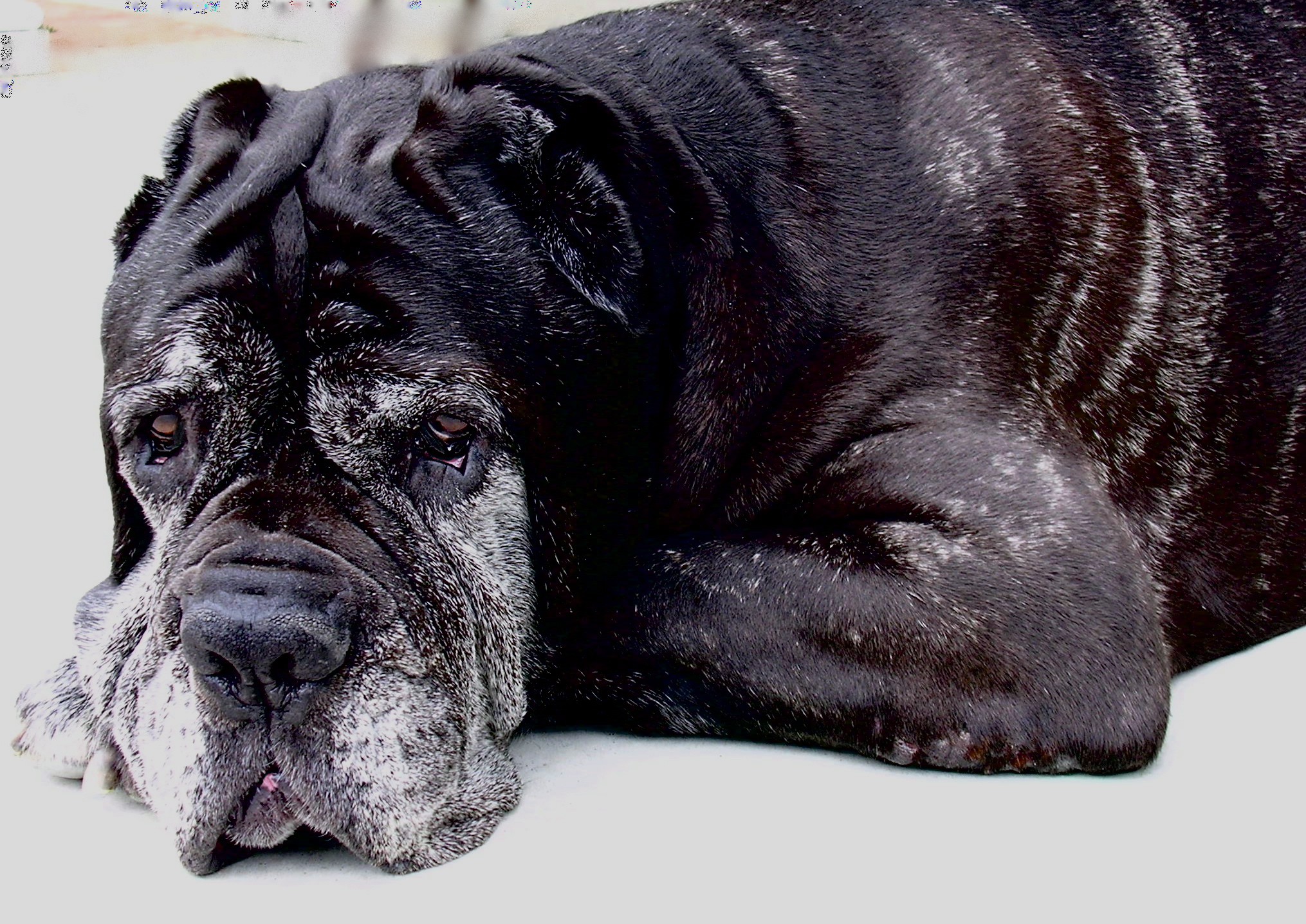Just like humans, dogs are living longer. Many of them can maintain a great quality of life right into their winter years. We’ve pulled together a little list of what to expect as your pooch grows older.
So what actually constitutes old age in a dog?
“One human year equals seven dog years” is the most common way to calculate your dog’s relative age. Our friends over at Hill’s Pet have written a great guide to doggo life stages.
Generally it can be said that any large pooch older than 7 years should be considered senior, while smaller breeds aren’t considered a senior until their teen years.
What are the signs of an ageing dog?
The process of ageing is slow and steady. Over time, your dog will become less active and excitable, and as their metabolism slows down they may put on a little weight. Their muzzle and ‘knickers’ might start to grey, and their hearing and sight will likely deteriorate. In the later stages of life it’s likely that they’ll have more little accidents, (which they’ll probably be embarrassed about, so it’s better not to scold them). Read on for more detail on the signs of ageing.
You may notice that your dog slows down a bit with ageing. This isn’t always the case, but look for subtle changes in how they get up, lie down, and use stairs. Is there any hesitation or stiffness? Does a downturn in the weather make it worse? It might be arthritis.
Arthritis is common in dogs as they age, particularly large breeds. Arthritis can occur in any joint, most commonly the legs, neck and spine, and is essentially the effect of bones rubbing together.
The PDSA have compiled a helpful list of the symptoms of arthritis in dogs:
- Stiffness (especially after rest or after walks)
- Limping/lameness
- Narrowing of the hips and back end (weak muscles in the back legs)
- Slowing down on walks
- Being quiet, grumpy or sleeping more
- Low energy (lethargy)
- Saliva stained fur around painful joints
- Reluctance to jump or climb stairs
- Enlarged or swollen joints.
If you suspect your dog has arthritis, it’s best to have it formally diagnosed by a vet who can suggest the best treatment plan. This will include a combination of medication and physiotherapy, and in extreme cases surgery. There are a number of things you can do at home to make your middle-aged mutt more comfortable.
- Keep your dog moving throughout the day with regular short walks, as lying down for hours will increase stiffness.
- Mange your dog’s weight; extra weight means extra pressure on joints, so keeping your dog slim is important.
- Keep them nice and warm with blankets and heat pads in colder months.
- Buy them a number of different beds which they can use as they wish, from orthopaedic and memory foam beds, to snuggly enclosed ones.
- Cover any slippery floors in your house to make it easier for them to pad around.

Weight gain
As their metabolism slows with age, your pooch will need fewer calories, and it’s best to start feeding them smaller portions several times a day to ease the pressure on their digestive system.
Implement any changes gradually over a series of weeks, and consult your vet before making any nutritional changes to your doggo’s diet.
Loss of hearing
Hearing loss and deafness is common in dogs as they age, just as with humans. If your dog is harder to wake up or starts to jump when you approach them from behind, it’s likely they are losing their hearing.
There’s not a huge amount that can be done to treat age-related hearing loss, but we’d highly recommend popping to the vet to rule out any other medical problems, such as an infection, growth, or foreign body in the ear.
Early in life, it’s good to cross-train dogs to recognise both sound and hand commands; our friends at Primal Pet Foods have created a handy list of common commands here. If not, all you can do is just be a little more sensitive to approaching hazards such as cars or people your dog may not have heard or seen.
Reduced eyesight
As they age, dog’s eyes often show a bluish transparent haze in the pupil area. This is a normal effect of ageing. The fancy term for this is “lenticular sclerosis”, and it doesn’t actually affect their eyesight.
They can also develop cataracts (which appears as white opaqueness, rather than blue), glaucoma and suddenly acquired retinal degeneration (also known as SARDS).
Middle-aged female dogs, Dachshunds, Miniature Schnauzers, and mongrels are especially prone to SARDS, which causes blindness quite suddenly. Cataracts, meanwhile, are more common in miniature poodles, cocker spaniels, miniature schnauzers, golden retrievers, Boston terriers, and Siberian huskies.
If you think your dog is losing their sight, it’s best to get it confirmed by your vet. There’s little that can be done to treat this, but Hill’s Pet have some great advice on how to make life more pleasant for your visually impaired pal:
- Put tags or bells that jingle on other animals in the house — and consider wearing one yourself — so that your blind dog knows where their companions are.
- Teach your dog commands such as ‘watch’, to make them aware they’re approaching a hindrance, or ‘step’, to alert them to an upcoming step.
- Get down on your dog’s level to look for things in your home that could harm them, covering sharp edges and removing hazards.
- Help put together a routine for them; this could include the trip from their bed to their food or the back door. Keep these pathways clear of any obstacles. When taking him outside, keep them on a lead to guide them to their favourite spot for one’s and two’s. After time, their other senses will strengthen making it easier to get around.
- Keep them active; they will still need plenty of exercise, you’ll just need to guide them on a short lead.
- A dog’s sense of smell rarely deteriorates, so when out and about, allow them more time than usual to sniff. This is their version of checking Twitter or reading the newspaper, so they’ll get alot out of the extra time you allow them.
- Help them play by finding an open, safe area to be able to run around, and play fetch with dog toys that make a noise.
Loss of muscle mass; ‘muscle atrophy’
As your pooch ages, they will likely lose muscle mass in their hind legs. If you notice a reduction in mass around the head and the tummy muscles check in with your vet, because it could indicate something more serious like Cushing’s disease (a hormonal imbalance) or masticatory myositis which can give them trouble chewing.

Share your tips for taking care of your senior pooch and keep up to date with all things canine by following us on Instagram, Facebook and Twitter.
What is Gudog?
Gudog is the easiest way to find & book the perfect dog Sitter. Thousands of loving Sitters are ready to care for your dog like family! All bookings come with Veterinary Care & Free Cancellation.

